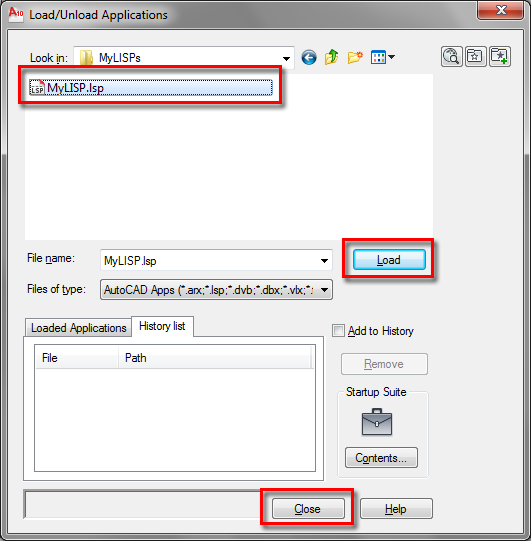

Write object & key :stream :escape :radix :base :circle :pretty :level :length :case :gensym :array The following table provides the most commonly used output functions of LISP − Sr.No. If not mentioned or nil, output-stream defaults to the value of the variable *standard-output*. (print (peek-char nil stream nil 'the-end))Īll output functions in LISP take an optional argument called output-stream, where the output is sent. (with-input-from-string (stream "Welcome to Tutorials Point!")
#Autocad lisp enter number on screen code
When you execute the code, it returns the following result −Ĭreate a new source code file named main.lisp and type the following code in it. ExampleĬreate a new source code file named main.lisp and type the following code in it − The read function reads characters from an input stream and interprets them by parsing as representations of Lisp objects. It may not take any argument.Īssume the user enters 10.2 from the STDIN Input, it returns, The read function is used for taking input from the keyboard. It reads one byte from the binary-input-stream and returns it in the form of an integer. Read-byte binary-input-stream & optional eof-error-p eof-value It skips over whitespace characters and then attempts to parse an integer. It examines the substring of string delimited by :start and :end (default to the beginning and end of the string). Parse-integer string & key :start :end :radix :junk-allowed It also returns the index of the first character in the string not read, or the length of the string (or, length +1), as the case may be. It takes the characters of the string successively and builds a LISP object and returns the object. Read-from-string string & optional eof-error-p eof-value & key :start :end :preserve-whitespace It clears any buffered input associated with input-stream. It is similar to read-char, but if it does not get a character, it does not wait for a character, but returns nil immediately. Read-char-no-hang & optional input-stream eof-error-p eof-value recursive-p The predicate listen is true if there is a character immediately available from input-stream, and is false if not. It returns the next character to be read from input-stream, without actually removing it from the input stream. Peek-char & optional peek-type input-stream eof-error-p eof-value recursive-p It puts the character most recently read from the input-stream, onto the front of input-stream. Unread-char character & optional input-stream

It takes one character from input-stream and returns it as a character object. Read-char & optional input-stream eof-error-p eof-value recursive-p It reads in a line of text terminated by a newline. Read-line & optional input-stream eof-error-p eof-value recursive-p It is used in some specialized situations where it is desirable to determine precisely what character terminated the extended token. Read-preserving-whitespace & optional in-stream eof-error-p eof-value recursive-p It reads in the printed representation of a Lisp object from input-stream, builds a corresponding Lisp object, and returns the object. Read & optional input-stream eof-error-p eof-value recursive-p The following table provides the most commonly used input functions of LISP − Sr.No. In this section, we will look into some of the most commonly used input-output functions provided in LISP. We have already used the format function, and print function for output. Common LISP provides numerous input-output functions.


 0 kommentar(er)
0 kommentar(er)
